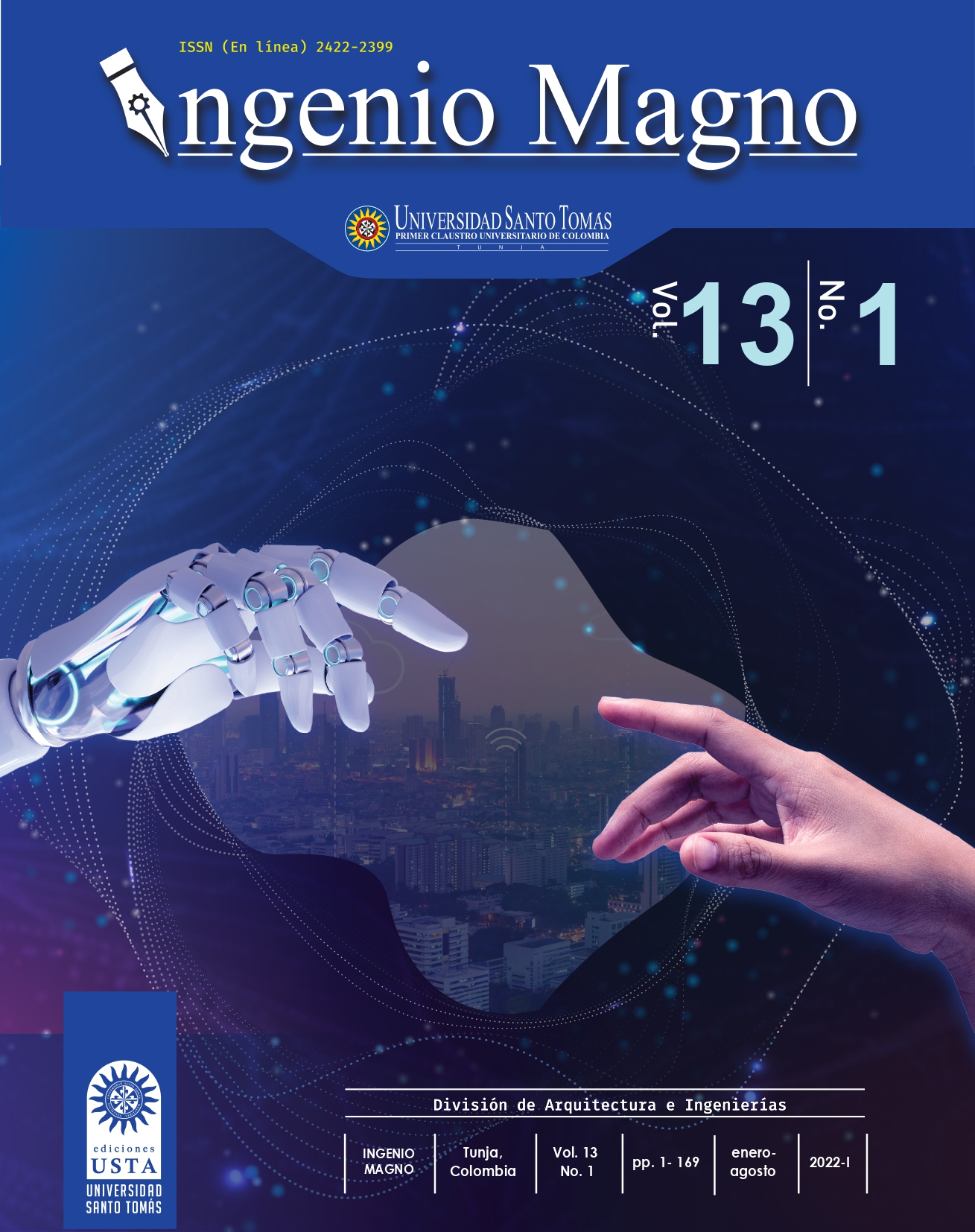Design and validation of a mechanical sorter for municipal organic wastes
Main Article Content
Abstract
Downloads
Article Details
DECLARATION OF ORGINIALITY OF SUBMITTED ARTICLE
With this document, I/We certify that the article submitted for possible publication in the institutional journal INGENIO MAGNO of the Research Center Alberto Magno CIIAM of the University Santo Tomás, Tunja campus, is entirely of my(our) own writing, and is a product of my(our) direct intellectual contribution to knowledge.
All data and references to completed publications are duly identified with their respective bibliographical entries and in the citations thus highlighted. If any adjustment or correction is needed, I(we) will contact the journal authorities in advance.
Due to that stated above, I(we) declare that the entirety of the submitted material is in accordance with applicable laws regarding intellectual and industrial property, and therefore, I(we) hold myself(ourselves) responsible for any complaint related to it.
If the submitted article is published, I(we) declare that I(we) fully relinquish publishing rights of the article to the University Santo Tomás, Tunja campus. As remuneration for this relinquishment of rights, I(we) declare my(our) agreement to receive two (2) copies of the edition of the journal in which my(our) article appears.
References
[2] Rodríguez, D. (2011). Gestión organizacional. Ediciones UC.
[3] Barrena, M., Gamarra, O., Maicelo, J. «Producción de biogás en laboratorio a partir de residuos domésticos y ganaderos y su escalamiento». Revista Aporte Santiaguino, n.o 1, 2010, pp. 86- 92.
[4] Villemain, C. (2018). Cómo la basura afecta al desarrollo de América Latina. Naciones Unidas. Recuperado de Naciones Unidas website: https://news. un. o rg/es/story/2018/10/1443562.
[5] Martínez, A. L., Montecinos, C. C., Rasillo, L. C., & de Cortázar, A. L. G. CUANTIFICACIÓN DE EMISIONES DIFUSAS MEDIANTE CAMARA DE FLUJO EN UN VERTEDERO DE RESIDUOS URBANOS.
[6] Asís, H., Dopazo, F., & Gianoglio, P. (2006). Producción de energía a partir de biogás obtenido de residuos sólidos urbanos.
[7] Minutillo, M., Perna, A., & Sorce, A. (2020). Plantas de producción de hidrógeno verde mediante vapor de biogás y procesos de reformado autotérmico: análisis energético y exergético. Energía Aplicada, 277, 115452. https://doi.org/10.1016/j. apenergy.2020.115452
[8] Kim, J., Qi, M., Kim, M., Lee, J., Lee, I., & Moon, I. (2022). Biogas reforming integrated with PEM electrolysis via oxygen storage process for green hydrogen production: From design to robust optimization. Energy Conversion and Management, 251, 115021. https://doi.org/10.1016/j. enconman.2021.115021
[9] Kumar, R., Kumar, A., & Pal, A. (2022). Overview of hydrogen production from biogas reforming: Technological advancement. International Journal of Hydrogen Energy, https://doi. org/10.1016/j.ijhydene.2022.08.059
[10] Cabello, A., Mendiara, T., Abad, A., Izquierdo, M. T., & García-Labiano, F. (2022). Production of hydrogen by chemical looping reforming of methane and biogas using a reactive and durable Cu-based oxygen carrier. Fuel, 322, 124250. https://doi. org/10.1016/j.fuel.2022.124250
[11] Vidal-Barrero, F., Baena-Moreno, F. M., Preciado-Cárdenas, C., Villanueva- Perales, Á, & Reina, T. R. (2022). Hydrogen production from landfill biogas: Profitability analysis of a real case study. Fuel, 324, 124438.
[12] Nnamoko, N., Barrowclough, J., & Procter, J. (2022). Solid Waste Image Classification Using Deep Convolutional Neural Network. Infrastructures, 7(4), 47.
[13] Altikat, A. A. A. G. S., Gulbe, A., & Altikat, S. (2022). Intelligent solid waste classification using deep convolutional neural networks. International Journal of Environmental Science and Technology, 19(3), 1285-1292.
[14] Castañeda-Torres, S., & Rodríguez- Miranda, J. P. (March 01, 2017). Modelo de aprovechamiento sustentable de residuos sólidos orgánicos en Cundinamarca, Colombia. Universidad Y Salud, 19, 1, 116-125.
[15] Toğaçar, M., Ergen, B., & Cömert, Z. (2020). Waste classification using AutoEncoder network with integrated feature selection method in convolutional neural network models. Measurement, 153, 107459.
[16] Vo, A. H., Vo, M. T., & Le, T. (2019). A novel framework for trash classification using deep transfer learning. IEEE Access, 7, 178631-178639.
[17] Lubongo, C., & Alexandridis, P. (2022). Assessment of Performance and Challenges in Use of Commercial Automated Sorting Technology for Plastic Waste. Recycling, 7(2), 11. https://doi.org/10.3390/ recycling7020011
[18] Tanguay-Rioux, F., Spreutels, L., Héroux, M., & Legros, R. (2022). Mixed modeling approach for mechanical sorting processes based on physical properties of municipal solid waste. Waste Management, 144, 533-542. https://doi. org/10.1016/j.wasman.2022.04.025
[19] Borole, A. S., & Phadke, A. R. (2022). A Review on the Development of Solar Power Automatic Biodegradable Waste Sorter and Composter. Smart Technologies for Energy, Environment

